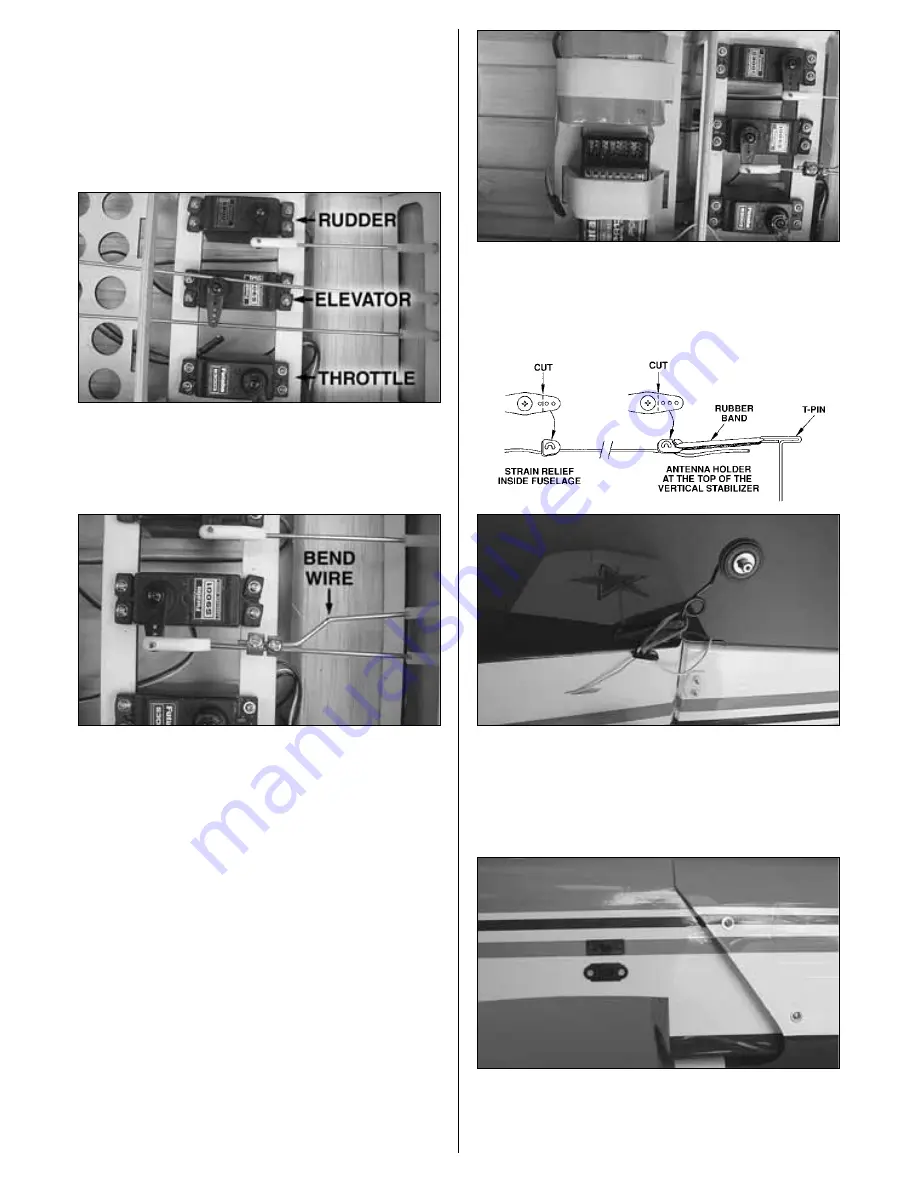
Center the rudder and align the wire pushrod with
the hole in the end of the servo arm. Use a fine, felt-
tip pen to mark the wire where it crosses the holes in
the servo arm. On that mark make a 90 degree bend.
From the bend measure an additional 3/16” [4.8mm]
and then cut off the excess pushrod wire. Install a
nylon Faslink to the wire and servo arm.
❏
7. Install the elevator servo into the servo tray.
Position it in line with the elevator pushrods. Mount
the servo using the same procedure used for the
rudder servo.
❏
8. Make a bend in the elevator pushrod wires as
shown in the photo above.
❏
9. Screw a 2.5 x 5mm [3/16”] bolt with a small
amount of threadlocker into two 4mm [5/32”] wheel
collars. Slide the wheel collars onto the wires. Align
the elevators. Tighten the set screws against the
wires. Cut the excess wire.
❏
10. Be sure the elevator servo is centered. Enlarge the
outermost hole in the servo arm with a Hobbico Servo
Horn Drill (or a #48 or 5/64” [2mm] drill bit). Center the
elevators and align the wire pushrod with the hole in the
end of the servo arm. Using a marker, mark the location
where the wire aligns with the hole in the servo arm. On
that mark make a 90 degree bend. From the bend
measure an additional 3/16” [4.8mm] and then cut off
the excess pushrod wire. Install a nylon Faslink to the
wire and servo arm.
❏
11. Install the battery and receiver as shown.
Place 1/4” thick foam under the receiver and battery,
holding it in place with the Velcro material included
with the kit.
❏
12. Use an arm cut from a servo horn to make an
antenna strain relief as shown. Insert the receiver
antenna into the white antenna tube. Hold it to the
fuselage by placing a small rubber band around the
tail wheel and the end of the antenna.
❏
13. Install the radio switch to the side of the
fuselage. Connect the battery to the switch and
secure the ends of the leads with heat shrink tubing,
tape or some other method for securing the leads.
18







































